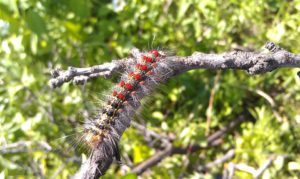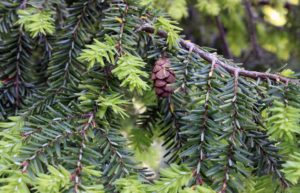8 Springtime Pests That Will Destroy Your Landscape
April 17, 2018 Do you know who else enjoys the warm-up that springtime brings each year? Pests! Putting all that time, effort and money into your landscape helps it look great. Left untreated, though, it also looks great to hungry critters who may be hiding in your landscape. Warm, moist landscapes are the perfect breeding ground for a variety of fungi and diseases.
Do you know who else enjoys the warm-up that springtime brings each year? Pests! Putting all that time, effort and money into your landscape helps it look great. Left untreated, though, it also looks great to hungry critters who may be hiding in your landscape. Warm, moist landscapes are the perfect breeding ground for a variety of fungi and diseases.
Warning signs of a problem include dieback, defoliation, and discoloration. If you begin to notice any of these, immediate action must be taken to avoid eventual damage and possible death.
Here are a few landscape pests you may encounter in Pennsylvania landscapes, and what to look out for.
- Anthracnose – This type of fungus is particularly fond of Dogwoods, but can also affect a variety of deciduous and flowering trees. Look for spotting on the foliage as summer draws near, and be on alert if you notice it moving into the branches. These spots will develop into large cankers that will eventually kill the branch.
- Apple Scab – Another fungus among us, apple scab loves crabapple trees. Similar to anthracnose in that it also starts with leaf spotting, apple scab leads to leaf loss. Eventually as fall nears and fruit begins to display, you’ll notice fewer crabapples and thinner foliage.
- Emerald Ash Borer – A somewhat recent addition to the list, this invasive Asian beetle borer crossed the Ohio border into Pennsylvania in 2007, and has been devastating local ash trees ever since. As the name suggests, the adult beetles have a metallic, emerald green shell and can be found enjoying the ash foliage. This actually only causes a little bit of damage. The real damage is done by the larvae, which feed on the inner bark and hinder the trees’ ability to transport water and nutrients. You may notice D-shaped exit holes in the bark when they emerge in the spring.
- Grubs – Do you have a guess what might love your lawn more than yourself? If you guessed grubs, you’d be correct. These fat little lawn pests can cause quite a bit of damage to your lawn if left untreated. Fortunately there are a handful of signs you might have a problem. These include brown spots in the lawn, soft ground, holes from animals searching for them, or weakened grass that is easily pulled out.
- Gypsy Moth – Another devastating pest for our trees and shrubs, gypsy moths cause extensive damage to almost any tree, although they prefer deciduous hardwoods. A bad infestation can strip an entire tree of its foliage in just a few days. If you notice fuzzy caterpillars on your trees in late spring, you may need to take action. These caterpillars can be a few inches in length, and their hairy bodies are black or brown with blue and red bumps. As we reach mid-summer, the adult moths arrive.
 Hemlock Wooly Adelgid – Another very common insect that can cause extensive damage, the adelgid can be found feeding on the underside of hemlock twigs. As they mature, you’ll begin to notice white, waxy cotton-ball-shaped formations on the underside of your branches.
Hemlock Wooly Adelgid – Another very common insect that can cause extensive damage, the adelgid can be found feeding on the underside of hemlock twigs. As they mature, you’ll begin to notice white, waxy cotton-ball-shaped formations on the underside of your branches.- Needle Cast – This disease is made up of several fungi and affects evergreens. You may notice needle loss or dead branches. A close inspection will reveal small spore forms that might be black, reddish-orange, or tan.
- Scale – Scale isn’t too picky about what it chooses to go after. Most trees and shrubs are susceptible to an attack from one of the many types of scale insects. The good news is that it is easy to spot, but the bad news is it is much harder to control. The most common form is white and fuzzy. It can also be white and waxy, cause a yellowing and shedding of leaves, and black mold on twigs and branches depending on which type of scale you have.
These are some of the most common landscape pests that you might find, but unfortunately there are dozens more. The best way to control these issues is early treatment and detection.
If you’re uncomfortable with trying to tackle this yourself, or want to take preventive measures to control some of these issues, give Hively a call at 717-292-5696 and we’ll be happy to come out and present a lawn care treatment plan for you.